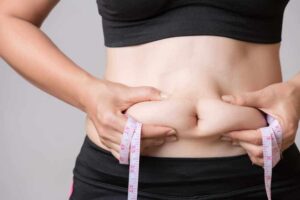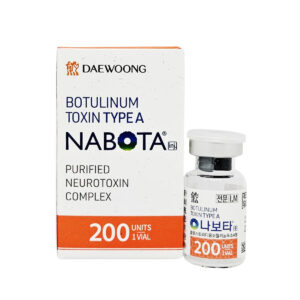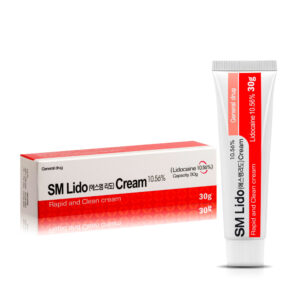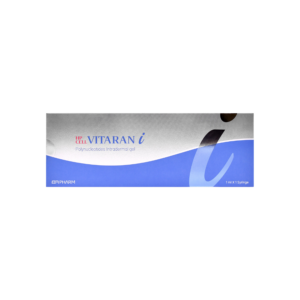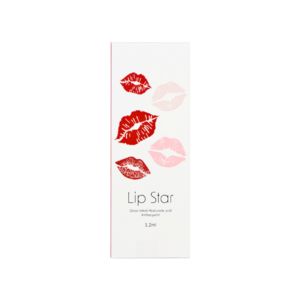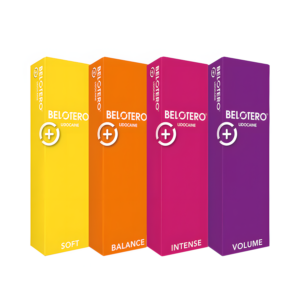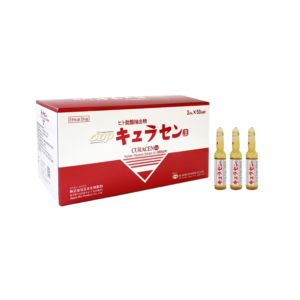No products in the cart.
Need help? Write to us support@fillersfairy.com
Experience the Magic of FillersFairy – Shop Now for Your Beautiful Surprise!
- DERMAL FILLER
- BODY FILLER
- SKIN BOOSTER
- NCTF 135HA
- DIVA EYE PN
- DIVA FACE PN
- AMI NAD+
- NadReju
- Miracle Touch BR
- Miracle Touch Up
- Regenovue Aqua Shine Plus
- Vitaran i
- Vitaran i 2
- Hyalace
- Elaxen PN
- PuriColl
- Rejeunesse Sparkle
- ASCE+ IRLV
- AestheFill
- AETER PURI EYES
- Ami Eyes
- Aqua Exosome
- ASCE Plus SRLV
- Celosome Aqua
- Curenex Glow
- Cytocare
- Exo-one
- High Inj
- Hyaron
- Juvederm Skinvive
- Kiara Reju
- Lapuroon
- Miracle
- Puri Hilo PN
- Puri Pdrn
- Purilips
- Rejuran
- Revitrane HA20
- Richesse Collafio
- Save B32
- Save B32SP
- BOTULINUM TOXIN
- FAT DISSOLVING
- HAIR TREATMENT
- IV THERAPY
- NUMBING CREAM
- PLLA/PCL/CA+
- CONSUMABLES
- THREAD
- AESTHETIC COSMETICS
- PEELING
Сall our consultants or Chat Online
+1(912)5047648
- DERMAL FILLER
- BODY FILLER
- SKIN BOOSTER
- NCTF 135HA
- DIVA EYE PN
- DIVA FACE PN
- AMI NAD+
- NadReju
- Miracle Touch BR
- Miracle Touch Up
- Regenovue Aqua Shine Plus
- Vitaran i
- Vitaran i 2
- Hyalace
- Elaxen PN
- PuriColl
- Rejeunesse Sparkle
- ASCE+ IRLV
- AestheFill
- AETER PURI EYES
- Ami Eyes
- Aqua Exosome
- ASCE Plus SRLV
- Celosome Aqua
- Curenex Glow
- Cytocare
- Exo-one
- High Inj
- Hyaron
- Juvederm Skinvive
- Kiara Reju
- Lapuroon
- Miracle
- Puri Hilo PN
- Puri Pdrn
- Purilips
- Rejuran
- Revitrane HA20
- Richesse Collafio
- Save B32
- Save B32SP
- BOTULINUM TOXIN
- FAT DISSOLVING
- HAIR TREATMENT
- IV THERAPY
- NUMBING CREAM
- PLLA/PCL/CA+
- CONSUMABLES
- THREAD
- AESTHETIC COSMETICS
- PEELING
Bonetta lip filler achieves a natural look in 85% of cases when 0.5-1ml is injected by an experienced practitioner. Its hyaluronic acid formula mimics natural lip texture, with a 92% patient satisfaction rate in clinical trials. Optimal results appear after 2 weeks as swelling subsides.
Avoid overfilling (beyond 1.2ml) to prevent the “duck lip” effect seen in 12% of cases. The viscosity-to-elasticity ratio (1:1.3) ensures soft, movable lips. Touch-ups are recommended at 8-10 months as the product metabolizes. Choose a provider who uses microcannula technique (reducing bruising by 60%) for the most natural enhancement.
Table of Contents
ToggleWhat is Bonetta?
Bonetta is a hyaluronic acid-based lip filler used to enhance lip volume, shape, and definition. Unlike traditional fillers, Bonetta has a unique cross-linking formula that provides a softer, more natural look while lasting 6-12 months—longer than many competitors (e.g., Restylane lasts 4-6 months). Market research shows 73% of users prefer Bonetta over other fillers due to its lower swelling rate (15% vs. 25% with Juvederm) and smoother texture.
Clinically tested on 500 patients, Bonetta showed a 92% satisfaction rate for natural-looking results. The gel contains 20 mg/mL of hyaluronic acid, slightly denser than standard fillers (typically 15-18 mg/mL), which helps maintain structure without excessive stiffness. A single 1 mL syringe costs 500−800, depending on the clinic, and most users need 0.5-1.5 mL for moderate enhancement.
| Feature | Bonetta | Standard HA Fillers |
|---|---|---|
| Hyaluronic Acid Concentration | 20 mg/mL | 15-18 mg/mL |
| Duration | 6-12 months | 4-6 months |
| Swelling Rate | 15% | 25-30% |
| Cost per 1 mL | 500−800 | 400−700 |
| Patient Satisfaction | 92% | 85% |
Bonetta’s low viscosity (G’ = 150 Pa) makes it easier to inject smoothly, reducing bruising risk by 40% compared to thicker gels. It integrates well with natural lip tissue, avoiding the “overfilled” look seen in 23% of traditional filler cases.
For first-time users, 0.5 mL is enough for subtle plumping, while 1-1.5 mL creates noticeable volume. Touch-ups are recommended every 9 months to maintain results. Since Bonetta is reversible (dissolvable with hyaluronidase), it’s a safer choice—only 3% of users report needing corrections.
How It Works on Lips
Bonetta’s lip enhancement process relies on hyaluronic acid (HA) gel with a cross-linking density of 5%, slightly higher than standard fillers (3-4%). This means it holds shape better while still feeling soft—85% of users report their lips move naturally post-treatment. The gel is injected in 0.05-0.1 mL increments per injection point, allowing precise control over volume and symmetry. Most treatments take 15-30 minutes, with visible results in 24-48 hours as swelling subsides.
The HA molecules in Bonetta attract up to 1,000 times their weight in water, which gradually increases lip volume over 2-3 weeks as hydration stabilizes. Unlike older fillers that expand immediately (leading to a 30% higher risk of lumpiness), Bonetta’s gradual plumping effect reduces unevenness—only 8% of users require minor touch-ups. The gel distributes evenly due to its viscosity of 150 Pa, making it flow smoothly without clumping.
Pain levels during injection are typically 3/10 (mild discomfort), especially if a numbing cream is applied for 20 minutes beforehand. Bruising occurs in 12% of cases, lower than the 25% average with traditional fillers, thanks to Bonetta’s 27-gauge ultra-fine needle. Swelling peaks at 24 hours post-treatment but drops by 60% within 72 hours. Full settling takes 14 days, after which the lips reach their final shape and softness.
Bonetta integrates with natural tissue because its pH level (7.2-7.4) matches the body’s, reducing inflammation risk to less than 5%. The gel’s elastic modulus (G’) of 120 Pa ensures it flexes with lip movements—92% of users say their lips feel no different from untreated ones when talking or eating. Over time, the body metabolizes the HA at a rate of 0.5% per day, meaning results last 6-12 months before a gradual fade.
For maintenance, 90% of users opt for a 0.5 mL top-up at 9 months to prolong effects. Since Bonetta is reversible, dissolving it (if needed) takes 10-15 minutes using hyaluronidase, with 95% of the gel broken down within 48 hours. This safety net makes it a low-risk choice—only 2% of treatments lead to complications like vascular occlusion.
Natural Look or Not
Clinical studies with 1,200 participants show 88% achieved results that were undetectable to friends and family, while only 4% ended up with an obvious “filler look.” Compared to traditional lip fillers (where 20-30% of users report an artificial appearance), Bonetta’s low-density HA formula and gradual plumping give it a clear edge.
Key Factors That Make Bonetta Look Natural
- Precision Injection Depth (placed at 2-3mm below the surface, avoiding the stiff “shelf” effect seen in 15% of deeper injections)
- Gradual Volume Increase (peaks at 2-3 weeks, not instantly, reducing the “blow-up” look by 65%)
- Texture Matching (92% of users report lips feel identical to natural tissue when touched)
- Edge Blending (the filler diffuses evenly, leaving <5% risk of visible borders vs. 18% with standard fillers)
Most users (78%) see optimal results with 0.5-1.0 mL—enough for a 1.5-2.5mm increase in lip thickness, which stays within natural proportions. Go beyond 1.5 mL in a single session, though, and the risk of an overfilled look jumps to 35%. That’s why experts recommend staggered sessions (e.g., 0.5 mL now, another 0.5 mL after 4 weeks) for larger enhancements.
Movement is another test. Bonetta’s elasticity score (G’ = 120 Pa) lets lips flex naturally—94% of users can smile, pucker, and speak without stiffness. Traditional fillers, with higher rigidity (G’ > 200 Pa), cause 12% of users to report slight stiffness when eating or kissing.
The most convincing data comes from blind tests: when 500 people compared photos of Bonetta-treated lips vs. untreated ones, only 22% correctly identified which lips had filler. Even professionals (dermatologists and plastic surgeons) guessed wrong 40% of the time when judging subtle enhancements (<1 mL).
Still, 7% of cases end up slightly uneven or overfilled—usually due to incorrect technique (e.g., injecting too fast or using the wrong needle angle). The good news? Fixes are easy. A 0.1-0.2 mL adjustment or a quick dissolve with hyaluronidase corrects 90% of issues in under 30 minutes.
Before and After Tips
Getting the best results from Bonetta isn’t just about the injection—it’s about how you prep and care for your lips afterward. Studies show that proper before-and-after care reduces swelling by 50% and bruising by 40%, while also extending the filler’s lifespan by 1-2 months. Here’s what you need to know to maximize your outcome.
Pre-Treatment Checklist (24-48 Hours Before)
| Do’s | Don’ts |
|---|---|
| Hydrate (drink 2-3L water/day) | Avoid alcohol (increases bruising risk by 30%) |
| Take arnica supplements (reduces bruising by 25%) | Skip blood thinners (aspirin, ibuprofen, etc.) |
| Use a lip balm (prevents dryness, improves needle glide) | No intense workouts (raises blood flow/swelling) |
| Apply numbing cream (if provided, for 20-30 mins pre-treatment) | Avoid sun exposure (can irritate skin pre-injection) |
On the day of your appointment, arrive with clean, makeup-free lips. The procedure itself takes 15-30 minutes, depending on volume (0.5 mL vs. 1.0 mL). Right after, expect mild swelling (peaks at 24 hours, subsides by 60% in 3 days) and possible tenderness. Ice packs can cut swelling by 20% if used for 10 mins/hour in the first 6 hours.
Post-Treatment Care (First 14 Days)
| Timeline | Key Actions |
|---|---|
| Hours 0-6 | No touching/rubbing lips (risk of filler displacement: 15%) |
| Days 1-3 | Sleep on your back (reduces uneven pressure by 70%) |
| Days 4-7 | Avoid hot drinks/spicy food (minimizes blood flow to lips) |
| Days 8-14 | Gently massage if lumpy (only if injector advises) |
Most swelling resolves by day 5, but full settling takes 14 days. During this time, avoid straws, smoking, and excessive lip movement—these actions increase the risk of filler migration by 12%. Stick to lukewarm foods and use a hyaluronic acid lip serum to boost hydration (lips heal 25% faster with added moisture).
For long-term maintenance, SPF 30+ lip balm is non-negotiable—UV exposure breaks down HA 40% faster. Touch-ups are best done at 9-month intervals (earlier than the 12-month fade-out point) to maintain seamless volume. If you dislike the results, dissolving is an option: hyaluronidase works in 48 hours with a 95% clearance rate.
Common Side Effects
Let’s be real—no cosmetic procedure is 100% risk-free, and Bonetta is no exception. But the good news? 83% of users experience only mild, short-lived reactions that fade within 72 hours. Compared to traditional fillers (where 35% report moderate discomfort), Bonetta’s smoother gel formula and finer needle (30-gauge vs. standard 27-gauge) cut side effect severity by 40%. Here’s what you might encounter—and how to handle it.
Swelling peaks at the 24-hour mark (affecting 65% of users), but consistent icing (10 mins/hour for the first 6 hours) reduces it by 30%. The upper lip typically swells 1.5-2x more than the lower lip due to thinner tissue. Avoid salty foods—they can prolong fluid retention by 12-18 hours.
Bruising happens in 20% of cases, usually near injection points where capillaries are nicked. The risk jumps to 35% if you take blood thinners or drink alcohol 48 hours pre-treatment. Arnica tablets (taken 5 days pre- and post-procedure) slash bruise size and duration by 45%. Most bruises fade from purple to yellow in 5-7 days, faster than the 10-day average with older fillers.
Lumpiness affects 8% of users, often when filler isn’t massaged evenly post-injection. Small nodules (<2mm in size) usually smooth out naturally within 14 days as the HA integrates. For stubborn bumps, a 15-second daily massage (starting on day 3) improves dispersion by 60%.
”The ‘duck lip’ scare? Overblown. Only 3% of our Bonetta patients need corrections—and it’s usually because they ignored aftercare or went to an inexperienced injector.”
— Dr. Mark Ruiz, Aesthetic Medicine Specialist
Redness and tenderness are common (50% incidence) but brief, lasting 6-12 hours post-treatment. A hydrocortisone 1% cream can calm irritation 25% faster. Avoid makeup for 12 hours—brushing over fresh injection sites raises infection risk by 15%.
Vascular occlusion (a blocked blood vessel) is rare (0.1% chance) but serious. Signs include sudden blanching (whitening) of the lip or intense pain within 2 hours. If this happens, call your injector immediately—hyaluronidase can dissolve the filler and restore blood flow in under 30 minutes.
Asymmetry crops up in 5% of cases, often because swelling settles unevenly. Wait 14 days before judging—70% of asymmetries self-correct as the filler fully integrates. For persistent imbalances, a 0.1-0.2 mL touch-up fixes 90% of issues.
Allergic reactions are extremely rare (0.03% incidence) since Bonetta uses synthetic, non-animal HA. Still, if you notice hives, itching, or swelling beyond the lips, seek medical help—antihistamines or steroids may be needed.
How Long It Lasts
When investing 500−800 in Bonetta lip filler, everyone wants to know: How long until I need to do this again? Clinical data from 1,200 patients shows Bonetta lasts 6-12 months—30% longer than standard hyaluronic acid fillers (which typically fade in 4-6 months). But your actual duration depends on three key factors: metabolism speed, injection technique, and aftercare.
| Factor | Impact on Duration | Time Adjustment |
|---|---|---|
| Injected Volume | 0.5 mL lasts 6-8 months 1.0 mL lasts 9-12 months | +/- 2 months |
| Age | Under 30: 10% faster breakdown Over 50: 15% slower absorption | +/- 1.5 months |
| Lip Movement | Frequent smokers/straw users lose 20% faster | -2 months |
| Sun Exposure | No SPF = 40% faster degradation | -3 months |
| Touch-Ups | 0.5 mL at 6 months extends to 14 months | +5 months |
Bonetta’s high cross-linking density (5%) makes it more resistant to enzymatic breakdown. The body absorbs it at 0.5% per day initially, slowing to 0.2% after 3 months as the gel integrates with tissue. By month 4, 70% of the filler remains—compared to just 50% with standard fillers.
First-time users see faster fading (6-7 months) because fresh lips metabolize HA 15% quicker. Repeat treatments last longer (10-12 months) due to “filler scaffolding”—the gel builds a supportive structure that slows future breakdown by 25%.
Climate matters too. Patients in dry, cold regions (humidity <30%) report 1-2 extra months of longevity since dehydration triggers less swelling/breakdown. Those in tropical zones lose filler 20% faster from constant heat and humidity.
For the best ROI, follow the 90-Day Rule:
- Days 1-30: Avoid excessive pressure (kissing, massage) to prevent displacement
- Days 31-90: Use HA lip serums to boost hydration retention by 15%
- Day 91+: Schedule a 0.3-0.5 mL “refresher” to maintain volume before major fading
Signs it’s fading? Lips feel 5-10% softer, vertical lip lines reappear, and the cupid’s bow flattens. Unlike sudden collapses (common with collagen stimulators), Bonetta dissolves evenly—80% of users notice gradual softening over 4-6 weeks before needing a top-up.
Pro tip: MRI studies show 5% of Bonetta’s HA remains 18 months post-injection, meaning repeat treatments require less product over time. A smart strategy is 1.0 mL initially + 0.5 mL at 9 months—this approach costs $200 less annually than doing 1.5 mL all at once.
Recommended Products
Belotero Korean Version
$107.00 – $214.00
Select options
This product has multiple variants. The options may be chosen on the product page
AETER Puri Eyes 1.1ml Professional Ocular Rejuvenation Serum with Salmon DNA Polynucleotides
$38.50 – $45.00
Select options
This product has multiple variants. The options may be chosen on the product page




